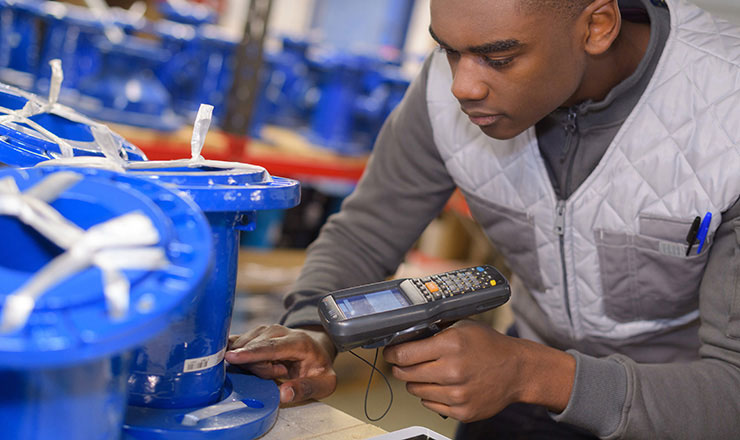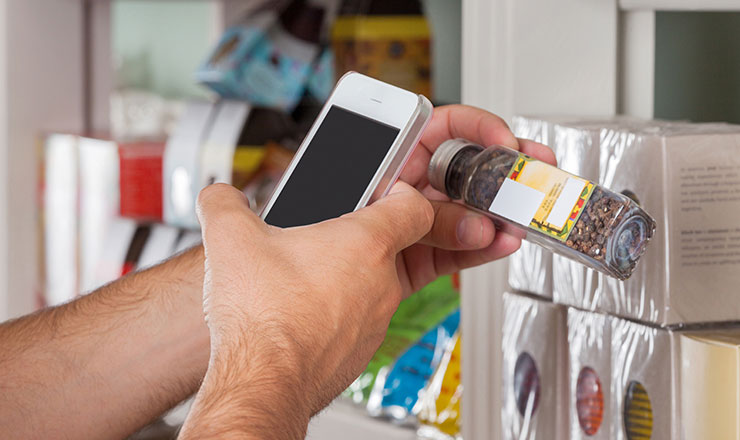How do Barcodes Work?

Take Control of Your Assets
A personalized demo is just one click away.
How do barcodes work? And why are they relevant, anyway? Barcodes often appear as a scannable series of lines with a corresponding sequence of numerals, or Universal Product Code (UPC). That pattern of lines stores data that, when scanned with a barcode scanner, is translated into a format readable and understandable by the user. For the easiest answer to the question “How do barcodes work?,” just head to your grocery store, where the cashier’s scanner reads the barcode of every item in your basket. Once scanned, the unique barcode allows the Point of Sale (POS) system to look up the specifics on that item: its name, price, weight, etc. on a screen. At retail stores, those systems can store information on inventory related to the item. Additionally, POS systems will often print barcodes at the bottom of customer receipts so that there’s a record of the transaction including what was purchased, its price, and the method of payment used by the customer. Returns and exchanges are far easier to process when the customer produces the receipt with that barcode.
Barcodes and IoT
Barcodes are popping up on everything these days. If you’ve never used an asset or inventory tracking system before, you may not have ever paid them much attention, if at all. Yet you don’t have to be a business owner to use barcodes. That’s because the Internet of Things (more commonly known by its acronym, IoT), is steadily becoming part of our daily lives both at home and work and everywhere in between. The Internet of Things describes a reality in which an almost limitless number of devices are connected to the Internet and gather and exchange data. How is that helpful? IoT proponents tout its ability to make our devices smarter, so they anticipate our needs, run more efficiently and alert us to breakdowns or other issues before they actually occur. In June 2019, International Data Corporation (IDC) predicted that by 2025, there will be 41.6 billion connected IoT devices. IoT devices were originally outfitted with Radio Frequency Identification (RFID) tags, or intelligent barcodes.
UPCs vs. SKUs and Barcode Types
One distinction that’s important to make is UPCs vs. Stock Keeping Units (SKUs). They’re often used interchangeably, but their functions are different. SKUs are used internally and are unique to a particular company, while UPCs, providing a unique identifier for a particular product, are standardized external product codes that may be used by any organization.
A lot of different barcode types are available to address users’ needs, including the previously mentioned UPCs and SKUs; 1D (1-dimensional) barcodes, which store a limited amount of data, around 20 to 25 characters, and are among the most commonly used barcodes; and 2D (2-dimensional) barcodes, which store more information than 1Ds – up to 2,000 characters. QR codes are a sophisticated 2D “matrix” barcode capable of storing both numeric and alphanumeric text, and may store up to 7,089 digits or 4,296 characters.
Beyond standard UPCs, there are a variety of formats that can be used to uniquely identify anything that can accommodate a barcode label. Those labels can be generated and printed from a system like Asset Panda, or more durable labels for heavy-duty use can be purchased through our partnership with a manufacturer.
Barcode Scanners
Barcode scanners are another important part of the answer to the question “How do barcodes work?” There are many varieties available, including laser scanners, handheld scanners, image barcode scanners and wireless or cordless handheld scanners. For businesses, barcode scanners represent another financial expenditure and are subject to occasional breakdowns or repairs. Like any fixed asset, these scanners may become lost or stolen.
Asset Panda’s cloud-based fixed asset tracking can be accessed by a mobile app with a built-in scanner that uses your smartphone or tablet's camera, so there’s no need for a separate handheld device. This all-in-one approach not only saves on barcode equipment expenses, it provides a fast way to manage check-outs, audits, maintenance records, and more from the palm of your hand.
Take Control of Your Assets
A personalized demo is just one click away.
Related News & Press

Learn more from an Asset Panda expert
Get a FREE consultation with an asset tracking expert to find out how you can transform your asset tracking.
Contact our Sales Team at (888) 928-6112


